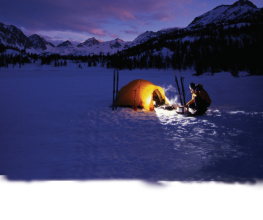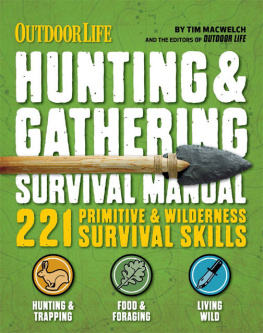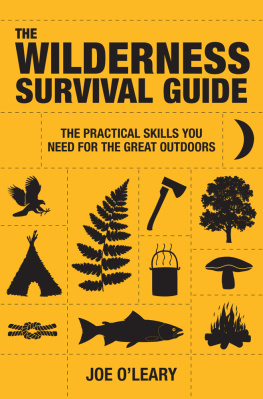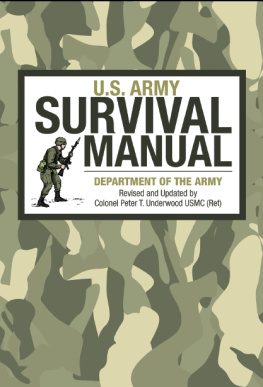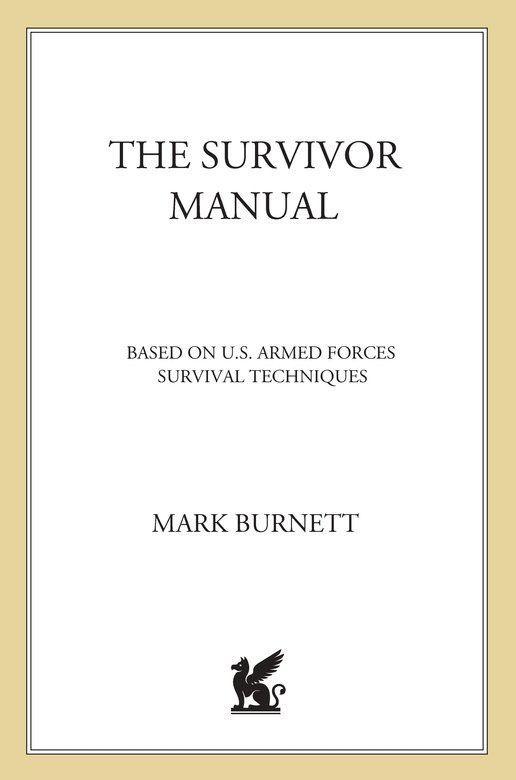
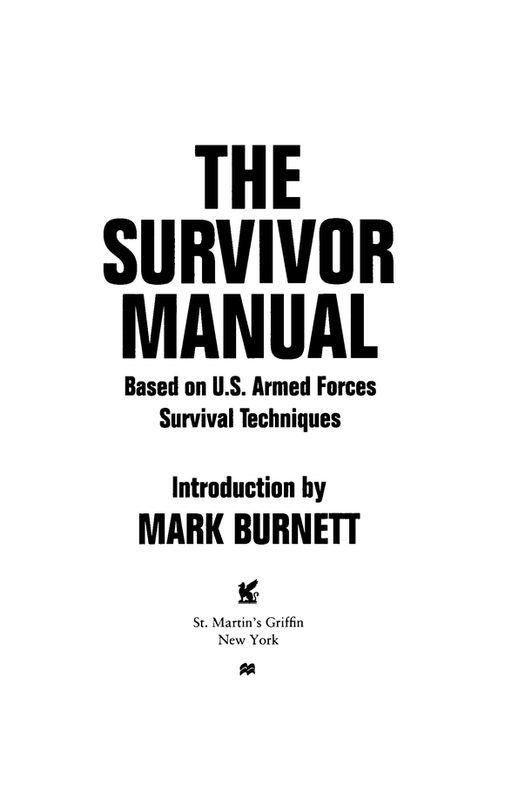
INTRODUCTION
What does it take to be a survivor? If youve watched the first two seasons of our television show, you know some of the answers. To surviveto enormous amount of physical prowess and mental acumen is necessary. The most successful contestants are canny and able to strategize, to form alliances and to change the rules of those alliances when necessary. They know both how to collaborate and when to go lone wolf, how to husband their strength and when to exert themselves.
The book youre holding in your hands would be invaluable to any of the tribe members on Especially in the earliest rounds of the game, you can watch contestants sizing each other up in several key areas: personality, character, and raw skills. If Jenna had known how to catch and cook a fish, could she have lasted to a later round on Survivor I? If Marilyn had known how to start that fire she worked so hard at in Survivor would she have been removed so early? What a contestant knows how to door what he doesntmarks him immediately. Contestants who dont have basic survival skills cant be useful to the other tribe members or to themselves: They have one less chip to play.
A superficial observation might be that society has become too civilized to need basic survival skills like finding drinkable water or knowing how to safely stow food without a refrigerator. But when I look at the news, I see the natural world impinging on our constructed society scores of times a day: Drivers are trapped in blizzards, tornadoes play havoc with housing and the water supply, strains in the system mean that whole regions do without power and electricity. And Ive always believed that the best test of a person is how they react, how they manage, what they know how to do when all creature comforts have been stripped away and theyre left one on one against the elements. Ive made it a point in my life to put myself up against the toughest odds again and again. Otherwise I think its hard to know what youre really made of. And thats what Survivor is all about.
The Survivor Manual is the real deal. In this handbook, youll find a treasure trove of useful if not crucial informationsimple, detailed instructions on everything from building a shelter to foraging for food, bandaging a fracture to identifying poisonous snakes, orienteering to constructing a raft. Learn these skillsknow them coldand youll not only be able to face anything nature throws at you, but will have the confidence that can come only from truly being able to survive under any circumstances.
Mark Burnett
FOREWORD
For centuries, Americans have taken great pride in their self-sufficiency. It is one of the cornerstone values upon which this country has thrived.
But twentieth century technology has made self-sufficiency more and more difficult to attain. In this age of specialization, it is far easier to find an expert to perform the task at hand. As a result we have become less and less capable of taking care of ourselves.
With this in mind, the editors set out to gather the latest information available on survival technique and thought. With research assignments, it is very rare that one can go to a single authoritative source for the information one is seeking. This book is an exception to that rule. There is no greater authority in the world on the subject of survival than the four branches of the United States Armed Forces.
Most of the material contained in this volume has been collected and culled from an array of brochures, pamphlets, and articles published by the Government Printing Office for use by American military personnel throughout the world. This is the same source material provided to our ground troops and Special Forces during World War II, to the Marines in Korea, and to the Green Berets and Navy Seal units in Vietnam. It is material that is regularly updated and revised, from information provided by soldiers and sailors who have actually been called upon to use it. It is practical, specific material that represents the most current and modern thinking on effective survival action technique.
The editors task, therefore, was to collect, collate, and arrange this material into one cohesive, clear, accurate, accessible volume that would be suitable for civilian as well as military use. Todaywhen international air travel has made flight over remote and isolated areas a commonplace occurrence, when wilderness hiking and camping are more popular than ever, when ownership of recreational and off-road vehicles, boats, and private planes is at an all-time highit is the kind of information that everyone should have at his or her fingertips.
The editors, John Boswell and George Reiger, both former Naval officers, are graduates of the U.S. Navys SERE (Survival, Evasion, Resistance, and Escape) School. Boswell is a writer, editor, and literary agent who has worked in the publishing business for nine years. Reiger, the recipient of the Vietnamese Armed Forces Medal of Honor, was one of the first military advisors in Vietnam, and later served as an official translator at the Paris Peace Talks. He is a former editor of Popular Mechanics, Conservation Editor of Field and Stream, and the author of nine books on outdoor and wilderness subjects.
The editors would like to express their appreciation and thanks to: The Government Printing Office; the Office of the Adjutant General, Department of the Navy; Headquarters, U.S. Marine Corps; and the Directorate of Administration, Department of the Air Force, for their help and assistance in facilitating the search for the material contained in The U.S. Armed Forces Survival Manual.
Table of Contents
Title Page
INTRODUCTION
FOREWORD
CHAPTER ONE - The Psychology of Survival
THE WILL TO SURVIVE
WHERE THE MIND LEADS
PREPARATION
PANIC AND FEAR
S-U-R-V-I-V-A-L
LONELINESS AND BOREDOM
SURVIVAL IN GROUPS
CHAPTER TWO - Finding Direction with a Map and a Compass
MAP READING
THE MAGNETIC COMPASS
CHAPTER THREE - Finding Direction Without a Map or a Compass
FINDING DIRECTION DURING THE DAY
EQUAL SHADOW METHOD FOR DETERMINING DIRECTION
FINDING DIRECTION AT NIGHT
DEAD RECKONING
CHAPTER FOUR - On the Move
RATE OF TRAVEL
ORIENTEERING
TYPES OF TERRAIN
CROSSING WATER
SIGNALING
CHAPTER FIVE - First Aid
BASIC HYGIENE
SICKNESS AND DISEASE
BASIC LIFESAVING FIRST-AID MEASURES I: LACK OF OXYGEN
BASIC LIFESAVING FIRST-AID MEASURES II: BLEEDING
BASIC LIFESAVING FIRST-AID MEASURES III: SHOCK
POSITIONING THE VICTIM
DRESSINGS AND BANDAGES
SEVERE WOUNDS
SEVERE BURNS
FRACTURES
FIRST AID FOR COMMON EMERGENCIES
TRANSPORTING THE WOUNDED
CHAPTER SIX - Basic Survival Skills
IMMEDIATE ACTIONS
SHELTER
WEATHER
HAZARDS
WATER
FIREMAKING
COOKING
HUNTING
TRAPPING
FISHING
EDIBLE PLANTS
CLOTHING
CHAPTER SEVEN - Survival in the Tropics
TERRAIN
IMMEDIATE CONSIDERATIONS
TRAVEL
SHELTER
ENVIRONMENTAL HAZARDS
HEALTH HAZARDS




